Marketplace for consulting projects
2017 · Catalant · Work
Context
Catalant is an expert marketplace that connects businesses to independent consultants for project-based work. Business clients (the demand side of the marketplace) post projects to the marketplace, experts (the supply side) then apply to those projects.
Shortly after raising Series C growth funding, three designers and I joined the three-year-old startup as the company's first team of product designers. Over the following year, we worked to establish a design culture and led a complete redesign of the platform to support the company's growth.
Challenge
The first version of the product was built for small and medium-sized business clients (“SMBs”), who were overlooked or underserved by traditional consulting firms. The projects posted by SMBs were fairly similar in size and complexity. Many SMBs, for example, posted market research projects that paid in the ballpark of $10,000. As a result of this project uniformity, the initial version of Catalant's platform prescribed a simple hiring process: (1) experts apply to a project by submitting an initial cost estimate, (2) the client schedules phone interviews with some of the applicants, (3) some applicants are then invited to submit a final project proposal and cost estimate, and (4) a single expert is finally hired for the project.
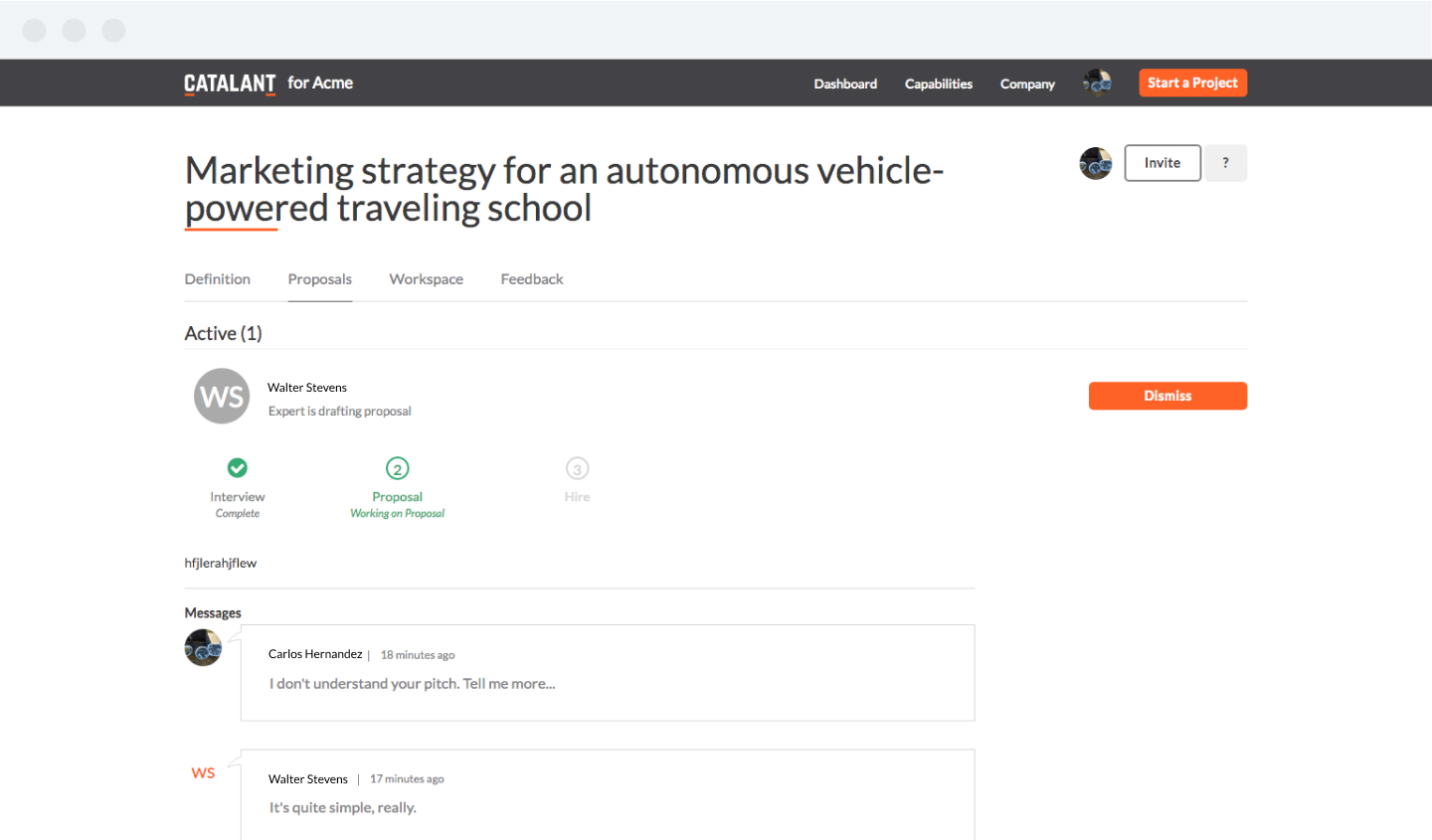
The existing hiring process was a prescriptive 3-step-process.
To fuel growth and compete more directly with traditional consulting firms, Catalant began to seek out larger enterprise clients. These enterprise clients, often Fortune 500 companies, came to Catalant with projects that were 10x larger in scope and budget. Early enterprise clients, however, frequently chose not to use the platform to review and hire their experts. Instead, a Catalant account executive provided a white-glove service to the client, often sharing experts' profiles via email, discussing project details over the phone, and taking platform actions on the client's behalf. This off-platform process doesn't scale and creates risk that clients will disintermediate the platform.
The design team and I set out to understand how we might best accommodate the needs of these new enterprise clients, while maintaining support for existing SMB clients.
Research
The first priority was to understand why enterprise clients preferred to work off-platform. I started by asking the account executives (“AEs”) to identify a few enterprise clients that had recently completed projects, and scheduled phone calls with them to learn about their recent experience.
The response was overwhelmingly clear: the platform's hiring process was too rigid. Enterprise clients that were hiring experts for 6-digit-budget projects needed flexibility to define their own hiring process. They needed to schedule multiple rounds of interviews, request edits to proposals, and exchange files and messages with candidate experts. Hiring consultants is a collaborative process between client and expert to gradually align on a scope of work, approach, and budget.
When I shared these initial learnings with the AEs, they pointed out that many of the existing SMB clients similarly felt too constrained by the platform's prescribed hiring process. This revealed a separate issue: AEs frequently heard feedback from clients and experts, but very little of that feedback made it to Catalant's product team.
As a next step, the design team and I organized a series of workshops to address this issue. We printed screenshots of each step in the platform's existing hiring process and taped them to a big wall in the office. We then invited groups of AEs and other internal stakeholders to stick post-its on the wall with feedback they've heard about each step in the process. The workshops were a huge success. Not only did we collect a lot of great feedback and identified several repeating issues, but the AEs were ecstatic to be given an opportunity to voice this feedback. When the platform does a better job meeting the users' needs, the AEs are able to spend less of their time on low-value product support conversations and more time on high-value project touchpoints. This leads to better job performance and higher commission-based pay for the AEs. These workshops unblocked a firehose of feedback and created quite a bit of enthusiasm for other initiatives led by the design team.
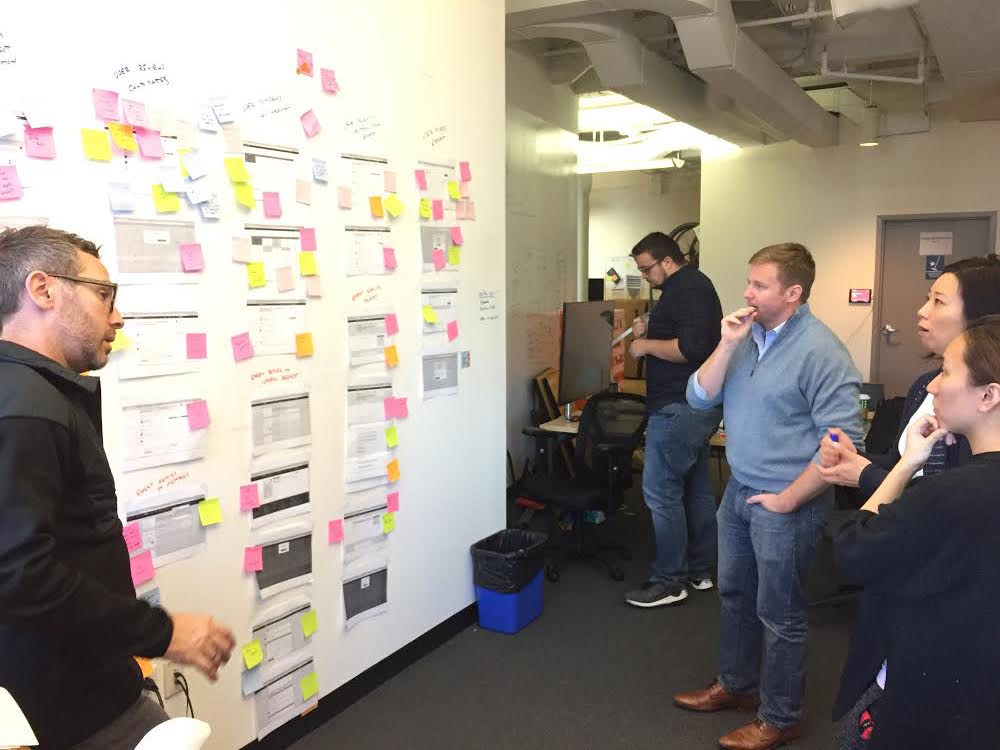
We held several stakeholder workshops to collect known feedback on the existing platform.
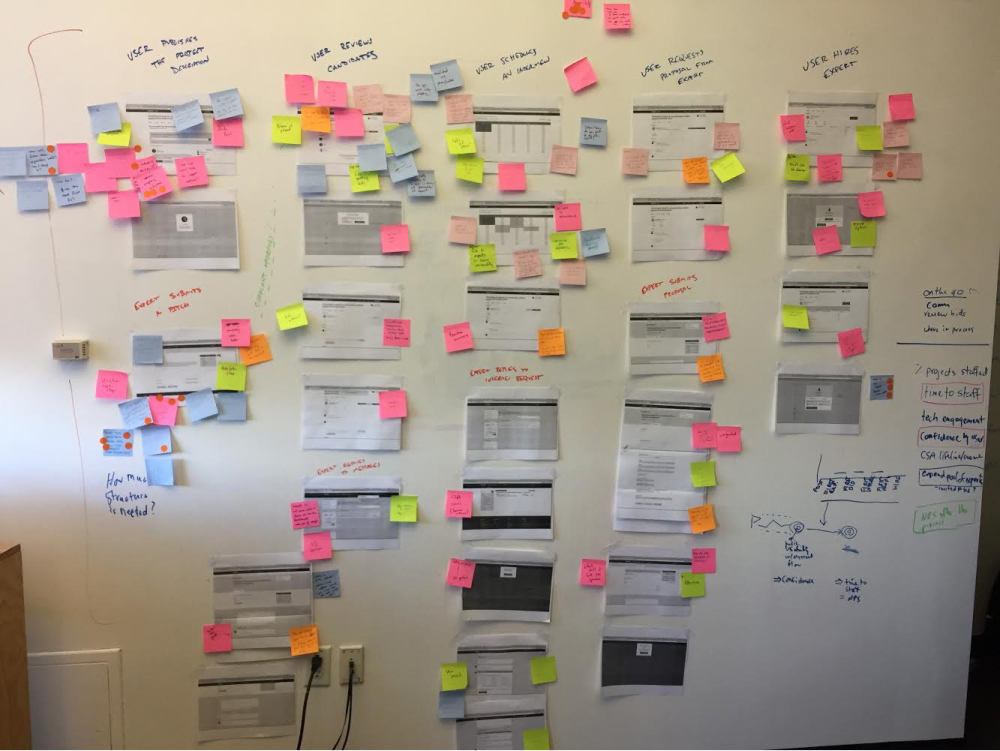
Each workshop gave us dozens of pieces of feedback.
In addition to needing a more flexible hiring process, we also learned about a number of other enterprise client needs: (1) ability to invite colleagues to help in the hiring process, (2) ability to hire multiple experts for a single project, (3) ability to create project milestones and milestone-based payments, and (4) ability to extend a project engagement with an expert.
Prototyping
Our research helped us arrive at a new mental model for the hiring process. Clients wanted to define their own hiring process and Catalant's role was to provide the workspace and toolkit to support that. The other designers and I all had different ideas about what that meant, so we started by mapping out the different steps in the process, the tools available at each, and the different states of a project and an expert's candidacy.
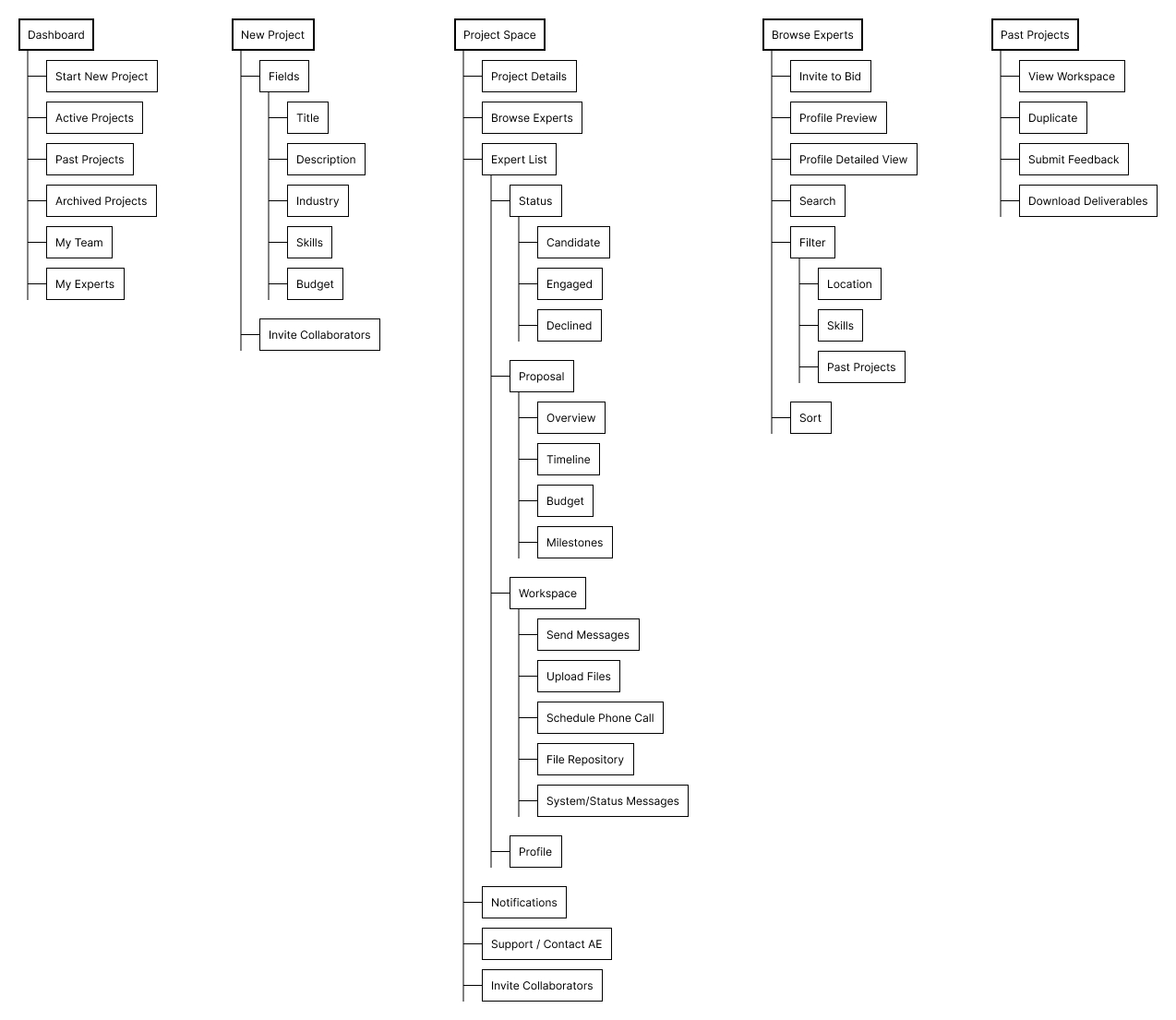
The information architecture helped us align on the key pages, states, and actions.
Next, I started building wireframes to explore the full lifecycle of a single project. We continued speaking with enterprise clients, SMB clients, and AEs throughout this part of our process to check our understanding of how they wanted to manage their projects. This feedback helped us fill in gaps in our thinking and challenge any assumptions we made about how the new hiring workspace should work.
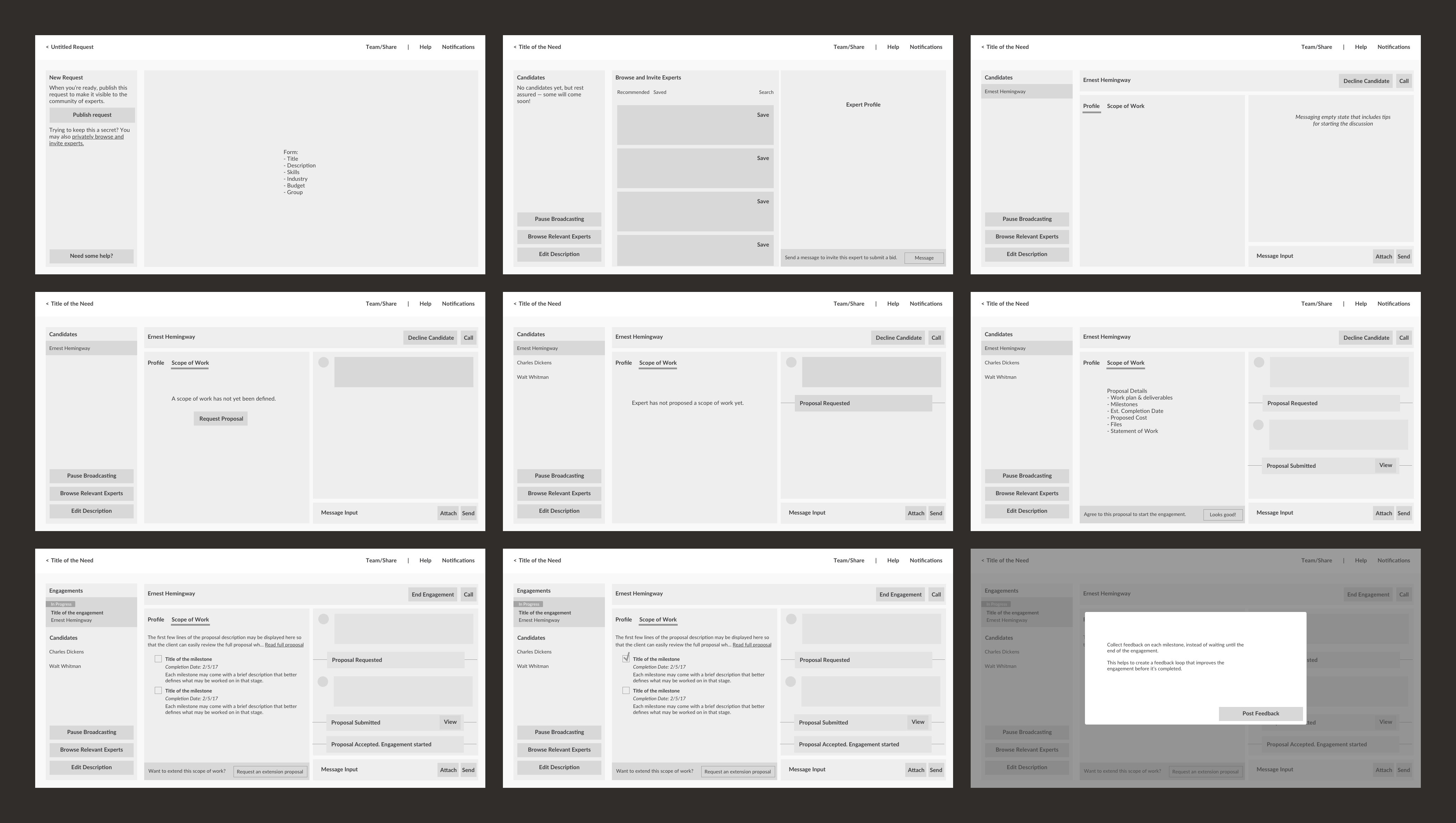
Low fidelity wireframes helped quickly brainstorm layout options.
Solution
As we continued to learn and test ideas, the wireframes gradually became more detailed. We regularly showed high-fidelity wireframes to usability study participants to polish the layout and interaction designs. Once we were reasonably confident in the page structure, we started to work on the visual design.
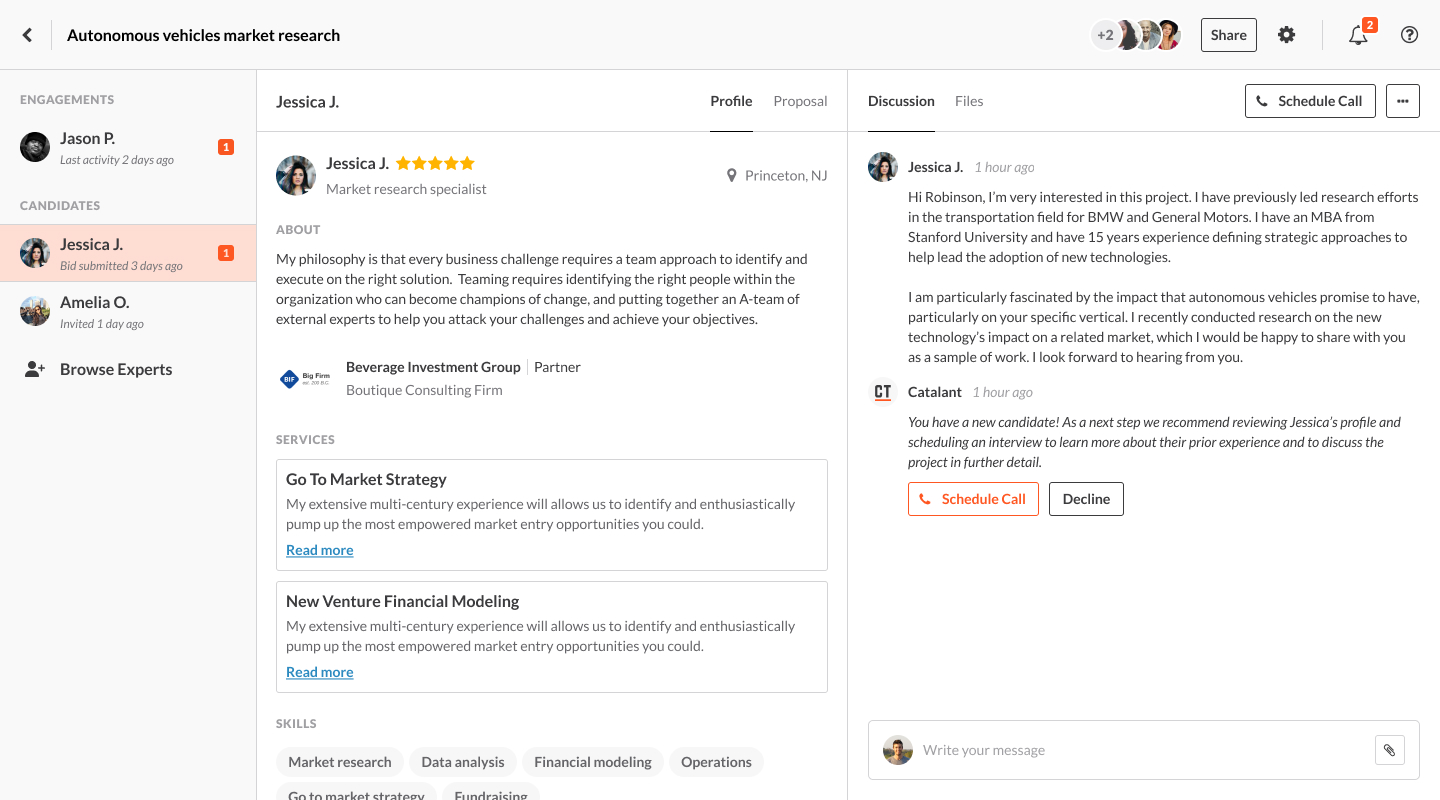
Final desktop view of the project workspace.
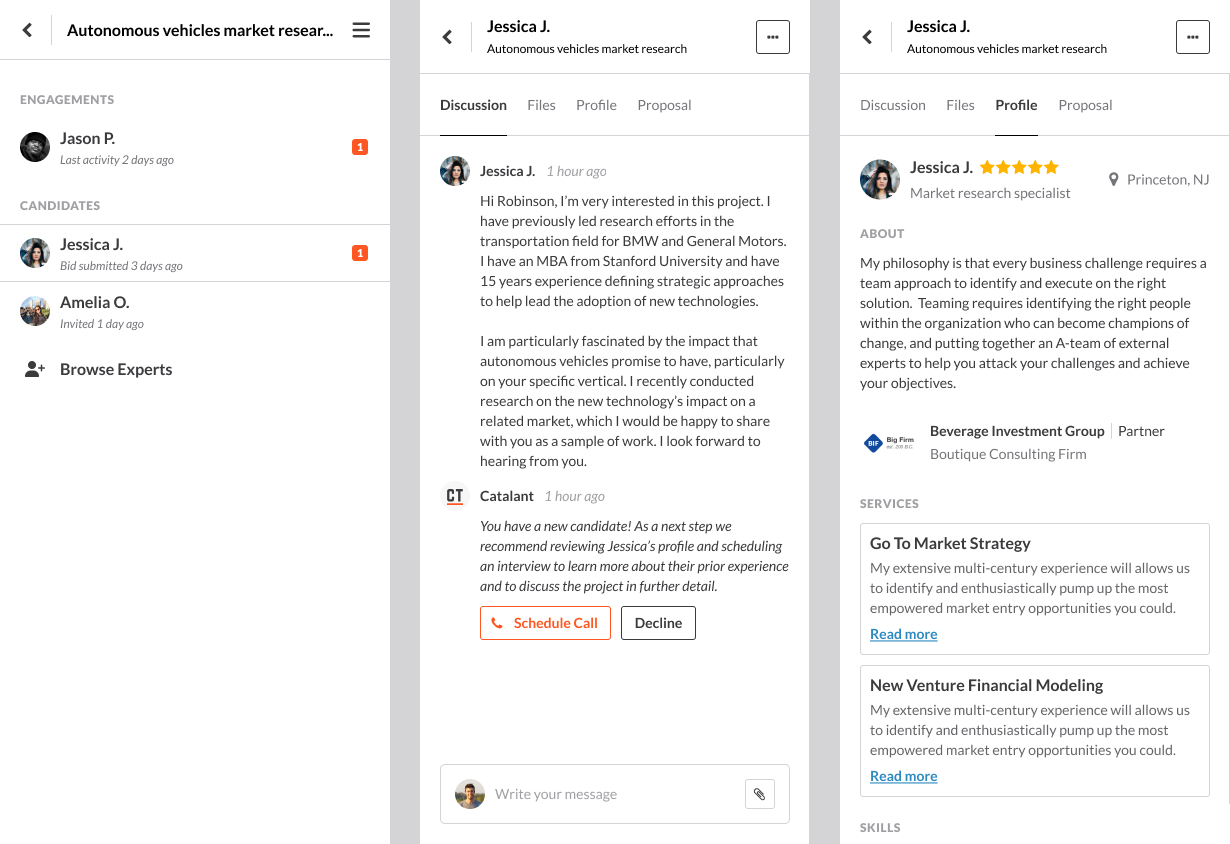
The workspace collapsed to set of tabs on mobile, with navigation between candidates.
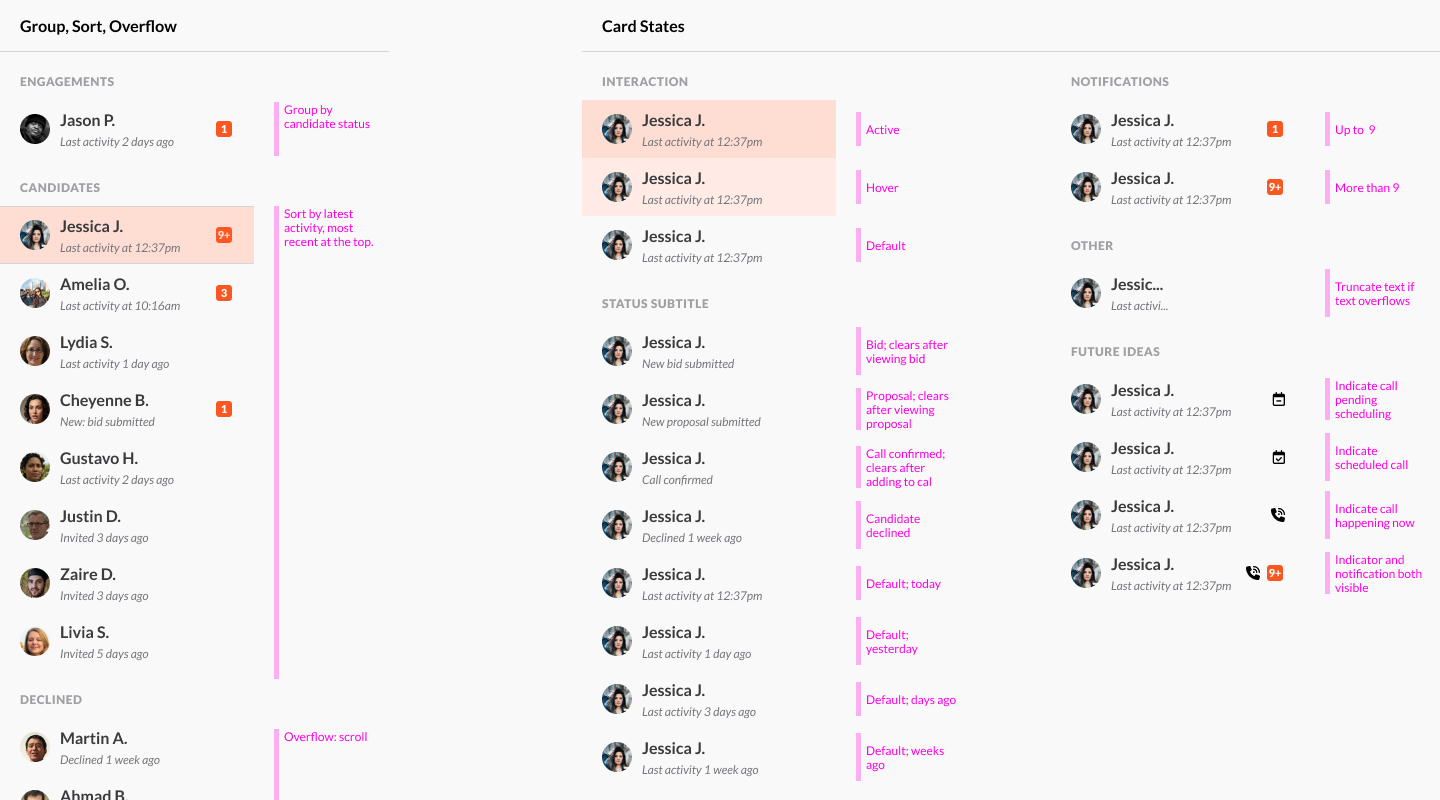
The candidate cards communicated various differnt candidate states.
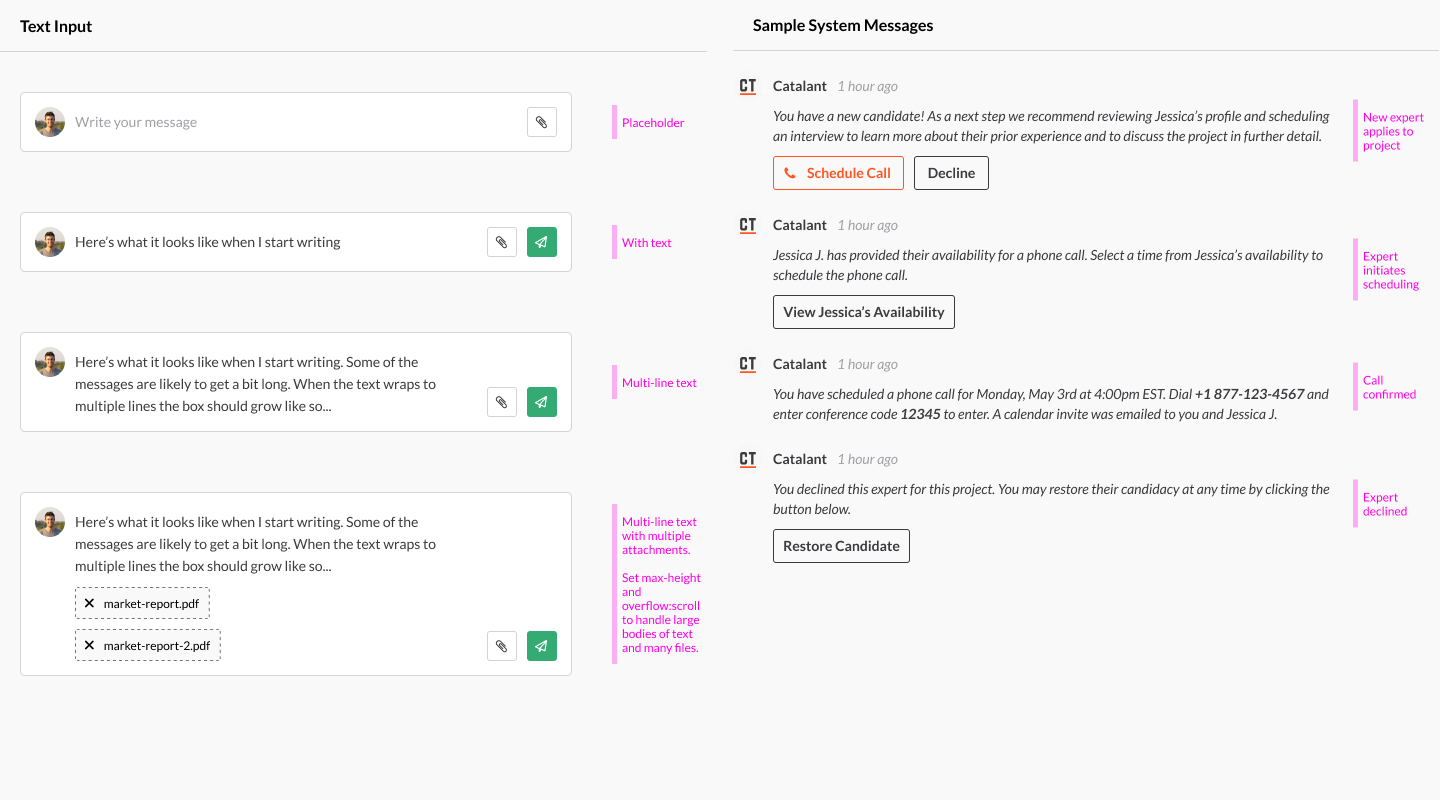
The messaging space included several detailed interactions.
Outcomes
In total, it took the team and I about 3 months to research, define, prototype, and design this new workspace. Rene led the research activities, while Petr and I paired on the prototyping and visual design. As the design work neared completion, I joined the engineering team to lead the frontend development of this new workspace. Petr and I used this project as an opportunity to introduce a design system, creating a set of shared components that would later be rolled out to other pieces of the platform. I led the development of those components as I built out the new workspace.
Team
- Brian Kalma · CXO
- Rene Chen · Designer
- Petr Kaplunovich · Designer